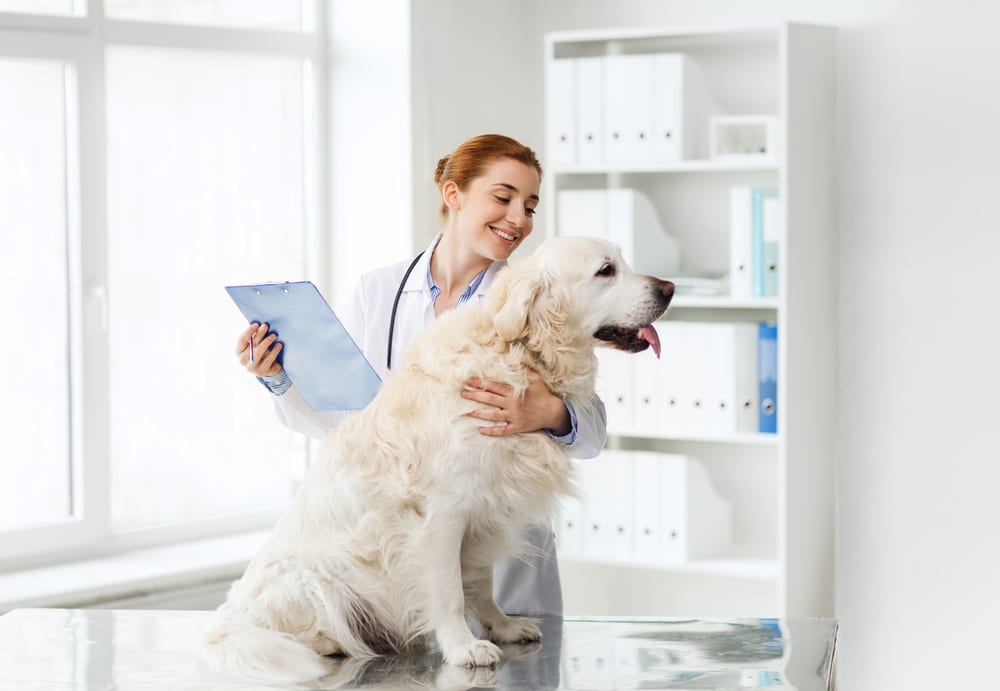Dogs are beloved members of our families. They enrich our lives with their love and joy, but sometimes their behavior can be a source of frustration or concern. So, when should you see an animal behaviorist to address unwanted behavioral issues in your dog?
You should see an animal behaviorist if your dog is exhibiting aggression, such as growling or biting, barking excessively, or showing separation anxiety, fear, or phobias. This also includes marking behavior, destructive behaviors (chewing), and elimination issues (house soiling).
Table of Contents
Common Reasons To See An Animal Behaviorist

The following are the common behavioral problems in dogs that animal behaviorists deal with.
Aggression
Aggression towards people or other animals is the most common behavioral problem in dogs. It manifests in various forms, such as growling, snapping, lunging, and biting, and can be directed toward family members, strangers, or other animals.
It’s also important to keep in mind that aggression can be a dangerous behavior, both for your dog and those around it. If your dog’s aggression is severe or poses an immediate risk to others, your dog might be showing one of the following aggression types.
Possessive Aggression (Resource Guarding)
This aggression is a common aggression in which the dog becomes possessive of an object, person, or location. The most common objects are treats, food, and chew toys, while possessiveness of a person is mostly related to a family member.
Fear-Related Aggression
This aggression occurs when the dog experiences fear. When the dog is threatened, it exhibits aggression to protect itself. Fear can be caused due to unfamiliar people or animals and punishment.
Redirected Aggression
This aggression occurs when the dog cannot exhibit aggression against the person or animal. So, it redirects the aggression toward a nearby person or animal. For example, a dog bites the owner who is trying to stop a dog fight.
Play Aggression
This aggression occurs during play and other playful activities (such as fetch). It involves nipping and biting. It is normal puppy behavior, and it is usually not present in adult dogs. But some adult dogs continue to do it in adulthood, which causes serious injuries to owners and other dogs.
Territorial Aggression
This aggression occurs when an unfamiliar person or dog approaches the area the dog considers its territory. The territory can be a home, a yard, or a car.
Predatory Aggression
This aggression is mostly seen in breeds with strong hunting instincts, such as terriers and hounds. Although it is normal behavior, it becomes dangerous when the dog takes children or other small pets as their prey. It poses a serious risk to the lives of children, wildlife, and small animals such as cats.
Excessive Barking
If your dog is barking excessively, it might be doing so to get your attention. Dogs who suffer from separation anxiety and boredom also bark excessively. The dog might be trying to alarm you of a nearby threat.
Fear And Phobias
Fear is a normal behavioral response of dogs to any threat. When fear becomes excessive and persistent, it may lead to phobias. A variety of reasons can cause fear, such as.
- Unfamiliar dogs or people
- Loud or strange sounds, i.e. thunder, fireworks, gunshots
- Places where the dog had an unpleasant experience, such as a vet clinic
Separation Anxiety
Separation anxiety occurs when the dog is left alone in the house. It can manifest as excessive barking, whining, attempting to escape, and exhibiting destructive behaviors such as the destruction of household items and furniture. Puppies who spend more time with their owners and are not socialized well are more likely to experience separation anxiety.
Destructive Behaviors
Destructive behavior in dogs refers to any behavior that results in damage to property or items. Common manifestations of canine destructive behavior include:
- Chewing on furniture, shoes, or clothing in the home
- Digging in the garden or backyard
- Scraping on windows or doors
- Jumping on furniture
- Plundering the trash or stealing food
Marking Behavior
It is a normal behavior in dogs in which they mark objects or surfaces with their urine. It is used to signal other dogs to their presence in the area. However, when it occurs indoors, it becomes an issue for the owners. Both male and female dogs can exhibit marking behaviors, but it is mostly seen in male dogs.
Elimination Issues
When a dog urinates or defecates inside the house, it is called “house soiling.” Dogs may soil indoors due to stress, anxiety, inappropriate training, or medical issues. House training may be necessary sometimes. A medical checkup is also necessary to rule out any medical conditions that may result in unwanted elimination behaviors.
Causes of Behavioral Issues In Dogs
There are several causes of behavior issues in dogs. Let’s start with medical conditions and pain.
A Medical Condition Or Pain
An underlying medical condition or pain can cause behavior problems. Common medical conditions that affect dog behavior include neurological pathologies and thyroid hormone imbalances. So, it is very important to visit the vet to treat any issues causing behavior problems in your dog.
Lack Of Training
Lack of training also causes abnormal behaviors in dogs. When a dog is not trained with proper guidance, it does not know what we desire from it. So this may lead to abnormal behaviors.
Genetics And Breed
A 2019 study by the Royal Society B reveals that genetics and breed differences play a role in the formation of dog behavior. The most genetics-related traits include chasing, trainability, and aggression. For example, it is easier to train a poodle than a pit bull.
Improper Socialization
Improper socialization causes abnormal behaviors too. After weaning, the late socialization period of a puppy starts, which ends at six months. During this period, the puppy must be exposed to different environmental stimuli, like traffic noises, unfamiliar dogs, or people in order to be successful with them in the future.
Lack Of Proper Mother-Pup Bonding
An analysis reveals that dogs that were born in commercial breeding systems or puppy mills suffer from a lack of proper mother-pup bonding. Those puppies have more aggression-related behavior problems later in life. It also includes dogs sold over the internet or in pet stores.
How To Prevent Behavioral Issues In Dogs
There are several ways to prevent behavioral issues in dogs. Let’s start with early training and socialization.
Start Early Training And Socialization
Training and socialization should start as soon as possible, ideally when the puppy is young. As a result, your dog will learn acceptable habits and become at ease in a variety of settings.
Apply Positive Reinforcement
Instead of using punishment to stop undesirable actions, use rewards and compliments to promote desirable behavior.
Establish Rules And Limits
Be regular in maintaining boundaries and rules, and be clear about what you expect of your dog.
Activity And Mental Stimulation
To help minimize boredom and destructive behaviors, give your dog ample physical exercise and mental stimulation.
What To Do If An Animal Behaviorist Doesn’t Work
You may need to consult a trainer if an animal behaviorist doesn’t work. A certified professional dog trainer has the knowledge and experience to help you recognize and modify your dog’s unwanted behaviors.
The best way to address undesired canine behaviors is by systematically combining all the above-mentioned steps. Have patience and consistency, and soon you will be able to enjoy a happy and healthy relationship with your furry friend.
Conclusion: When Should I See An Animal Behaviorist?
If your dog is displaying any type of behavior problem, it is always best to consult with an animal behaviorist. A behaviorist can help identify the root cause of the issue and develop an action plan to address it. If the problem is severe, or if you are at all concerned about your pet’s safety, it is best to consult with a behaviorist as soon as possible.
So, what has you looking at an animal behaviorist? Let us know your thoughts and why in the comments below!
